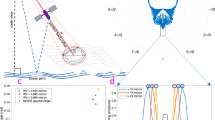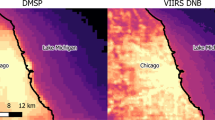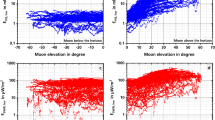Abstract
THE shadows to which Mr. Cyril Crossland refers in his letter to NATURE of May 30 have straight, fairly well-defined edges, and are therefore certainly cast by the sun itself, which would be still visible to anyone in the high reflecting layer, whether to east or west of the observer. They are certainly not cast by light “reflected from the glowing clouds in the west”, as Mr. Crossland thinks. The convergence of these rays towards the east, which the present writer has often seen, is purely a perspective effect. The rays themselves are in reality practically parallel, but seem to converge to east and west just as the parallel track of a straight railway seems to converge in both directions to anyone standing between the rails. The effect in the east soon after sunset is sometimes so striking that anyone might well believe that the sun had set there, were there no other circumstances to judge by.
This is a preview of subscription content, access via your institution
Access options
Subscribe to this journal
Receive 51 print issues and online access
$199.00 per year
only $3.90 per issue
Buy this article
- Purchase on Springer Link
- Instant access to full article PDF
Prices may be subject to local taxes which are calculated during checkout
Similar content being viewed by others
Author information
Authors and Affiliations
Rights and permissions
About this article
Cite this article
PORTER, T. Clouds and Shadows. Nature 89, 348–349 (1912). https://doi.org/10.1038/089348d0
Issue Date:
DOI: https://doi.org/10.1038/089348d0
Comments
By submitting a comment you agree to abide by our Terms and Community Guidelines. If you find something abusive or that does not comply with our terms or guidelines please flag it as inappropriate.



